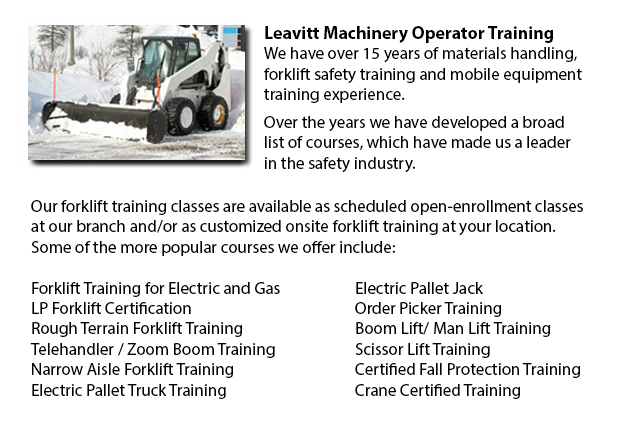
Skid Steer Ticket Marysville - On a skid-steer loader, the lift arms are beside the driver with pivot points at the back of the driver's shoulders. This makes them different than a conventional front loader. Due to the operator's closeness to moving booms, early skid loaders were not as safe as conventional front loaders, specially in the operator's exit and entry. Modern skid-steer loaders nowadays have numerous features to be able to protect the driver like fully-enclosed cabs. Like other front loaders, the skid-steer model can push materials from one place to another, could load material into a trailer or a truck and can carry material in its bucket.
Operation
Usually a skid-steer loader could be used on a job location rather than a large excavator by digging a hole from within. First, the skid-steer loader digs a ramp leading to the edge of the desired excavation, and after that it makes use of the ramp so as to excavate material out of the hole. As the excavation deepens, the machine reshapes the ramp making it longer and steeper. This is a very useful technique for digging underneath a building where there is not adequate overhead clearance for the boom of a big excavator. Like for example, this is a common scenario when digging a basement underneath an existing house or structure.
The skid-steer loader accessories add much flexibility to the equipment. For instance, conventional buckets on the loaders can be replaced accessories powered by their hydraulics consisting of backhoes, tree spades, sweepers, mowers, snow blades, cement mixers and pallet forks. Some other popular specialized attachments and buckets consist of wood chipper machines, grapples, tillers, stump grinder rippers, wheel saws, snow blades, trenchers, angle booms and dumping hoppers.
History
In nineteen fifty seven, the very first front-end, 3-wheeled loader was invented in Rothsay, Minnesota by brothers Louis and Cyril Keller. The brothers invented the loader to be able to help a farmer mechanize the method of cleaning turkey manure from his barn. This particular equipment was compact and light and had a back caster wheel that allowed it to maneuver and turn around within its own length, enabling it to execute similar work as a traditional front-end loader.
The Melroe brothers of Melroe Manufacturing Company in Gwinner, N.D. purchased in the year 1958, the rights to the Keller loader. The business then employed the Keller brothers to assist with development of the loader. The M-200 Melroe was the result of this partnership. This particular model was a self-propelled loader which was introduced to the market in 1958. The M-200 Melroe featured a a 750 lb capacity, two independent front drive wheels, a rear caster wheel and a 12,9 HP engine. By 1960, they changed the caster wheel with a back axle and launched the very first 4 wheel skid steer loader that was called the M-400.
The term "Bobcat" is utilized as a generic term for skid-steer loaders. The M-400 soon after became the Melroe Bobcat. The M-440 version has rated operating capacity of 1100 lbs powered by a 15.5 HP engine. The business continued the skid-steer development into the mid 1960s and introduced the M600 loader.
-
Manlift Safety Training Marysville
Manlift Safety Training Marysville - It is important for experienced Manlift operators to be aware of the connected hazards which come with particular types of scissor lifts. They must be able to operate the scissor lift in a way that protects not on... More -
Forklift Operator Certification Marysville
Forklift Operator Certification Marysville - Forklift operator certification is normally required for employees working in industrial, warehouse or construction environments to guarantee the safe utilization of forklifts. Workplace training need to f... More -
Crane Training School Marysville
Crane Training School Marysville - The crane training school offers industry-relevant programs. Courses provide trainees with learning outcomes that match present industry demands. Our small class sizes combine hands-on experience and theory. Our ind... More -
Heavy Equipment Training Marysville
Heavy Equipment Training Marysville - Normally, the different kinds of heavy equipment training are divided into 2 categories of machines: those that have rubber tires and tracked vehicles. Tracked vehicles comprise items like cranes, bulldozers and... More -
Counterbalance Forklift License Marysville
Counterbalance Forklift License Marysville - Forklifts, when operated by fully trained workers, are a major advantage to companies. We provide a thorough training program covering all aspects of operating a powered lift device. Counterbalance forklif... More -
Boom Lift Safety Training Marysville
Boom Lift Safey Training Marysville - Boom lifts are a type of elevated work platform or aerial lifting device which are normally utilized in warehousing, construction and industry. Boom lifts could be used in virtually any environment due to their v... More -
Aerial Lift Training Marysville
Aerial Lift Training Marysville - An aerial work platform is a mechanical access platform. This particular machinery provides access to otherwise not accessible areas for equipment or people. Likewise called an elevating work platform or aerial devic... More -
Aerial Boom Lift Training Marysville
Aerial Boom Lift Training Marysville - For people who operate or supervise the utilization of aerial lift platforms, right aerial boom lift Training is necessary. The aerial lift platform is for lifting people, materials and tools to elevated work lo... More

Forklift Training Marysville
TOLL FREE: 1-888-254-6157
Marysville, Washington
forklifttrainingmarysville.com
Email Us
About Us


